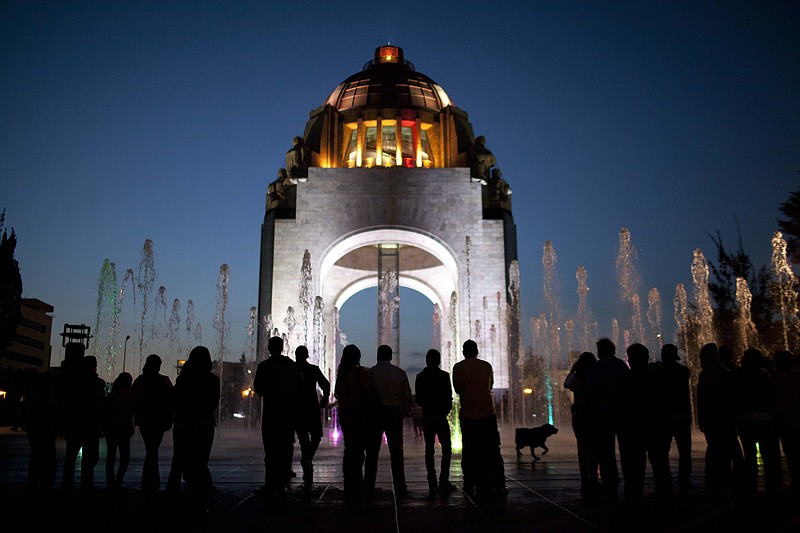MEXICO CITY (AP) - The plan is as big as this mammoth city: Turn a seedy metro hub into Mexico City's Times Square; clear swarms of feisty vendors and remodel the historic Alameda Central; illuminate the plazas and walkways of a park twice the size of New York's Central Park.
Mexico City's government is trying to transform one of the world's largest cities by beautifying public spaces, parks and monuments buried beneath a sea of honking cars, street hawkers, billboards and grime following decades of dizzying urban growth.
Despite the challenges, the ambitious, multimillion-dollar program carried out by former center-left Mayor Marcelo Ebrard and continued by his successor, Miguel Angel Mancera, is winning praise from urban planners and many residents. And it's turning the metropolis into an experiment in how to soften urban sprawl.
"It's time to tame the city," said Juan Carlos de Leo Gandara, head of the Iberoamerican University's sustainable urban projects. "Today is about giving the city back to pedestrians."
In the Alameda, made iconic in the Diego Rivera mural "Dream of a Sunday Afternoon in the Alameda," concrete sidewalks were replaced by marble, and makeshift vendor stands were kicked out - a renovation that cost about $18.7 million. Instead of a motley patchwork of folding tables and tarps, the newly opened park, anchored by the art nouveau Palacio de Bellas Artes theater, is a sea of greenery and calm in the midst of racing traffic.
"It used to be very dark, with no lighting. It really wasn't a place to bring my son," said Alma Rosa Romero, a 32-year-old housewife standing by the new dancing-water fountains, holding her child's hand. "Now it's beautiful."
Other completed projects include a once-neglected plaza with an Arc de Triumph-style monument to Mexico's 1910 revolution, which has been remade at a cost of $28.6 million from a homeless encampment to an oasis where families frolic and children run through spurts of water gushing out of the pavement. The copper dome of what started out as the country's Congress building is newly polished and gleaming.
Downtown, at the Chapel of the Immaculate Conception of Tlaxcoaque, the city has installed multi-colored fountains that light up at night and replaced a parking lot with a larger plaza for pedestrians. The city has also converted Francisco I. Madero street in the historic center into a pedestrian walkway stretching to the Zocalo, the plaza that's home to the National Palace and massive Metropolitan Cathedral. And under a popular bridge near the hip neighborhood of Condesa, the city made way for a taco joint and a playground.
One of the flagship renovation projects is the once-seedy, swarming Glorieta de Insurgentes, a roundabout and metro station in central Mexico City that sees hundreds of thousands of commuters pour through every day.
The circular plaza was sunk to let pedestrians stream below busy thoroughfares and catch their trains or buses or just hang out. Around its rim careen cars in a roundabout that briefly merges two of the city's biggest thoroughfares, the mighty Insurgentes and Chapultepec avenues.
When the plaza was built in 1969, the city's top priority was moving an onslaught of cars and people from one point to another. Highways and beltways elsewhere went up to cope with the population boom, and sprawl spread farther out. Once-famous and safe streets and plazas suffered from neglect by planners and became slum-like neighborhoods people avoided after sunset.
Future projects include a cleanup of 67 bridges around the city and more lighting for plazas and walkways throughout Chapultepec Park, Mexico City's grand urban green space.
Some projects, including the Insurgentes roundabout, are being completed with the help of private funds. The roundabout renovation includes $4.5 million from 15 advertising companies that are erecting the giant LED screens. Critics worry the arrangement will benefit private companies more than city residents. Much of the beautification of the historic center was paid for by telecommunications billionaire Carlos Slim.

